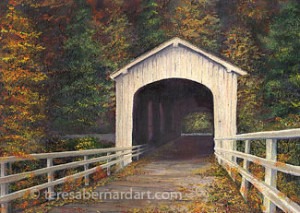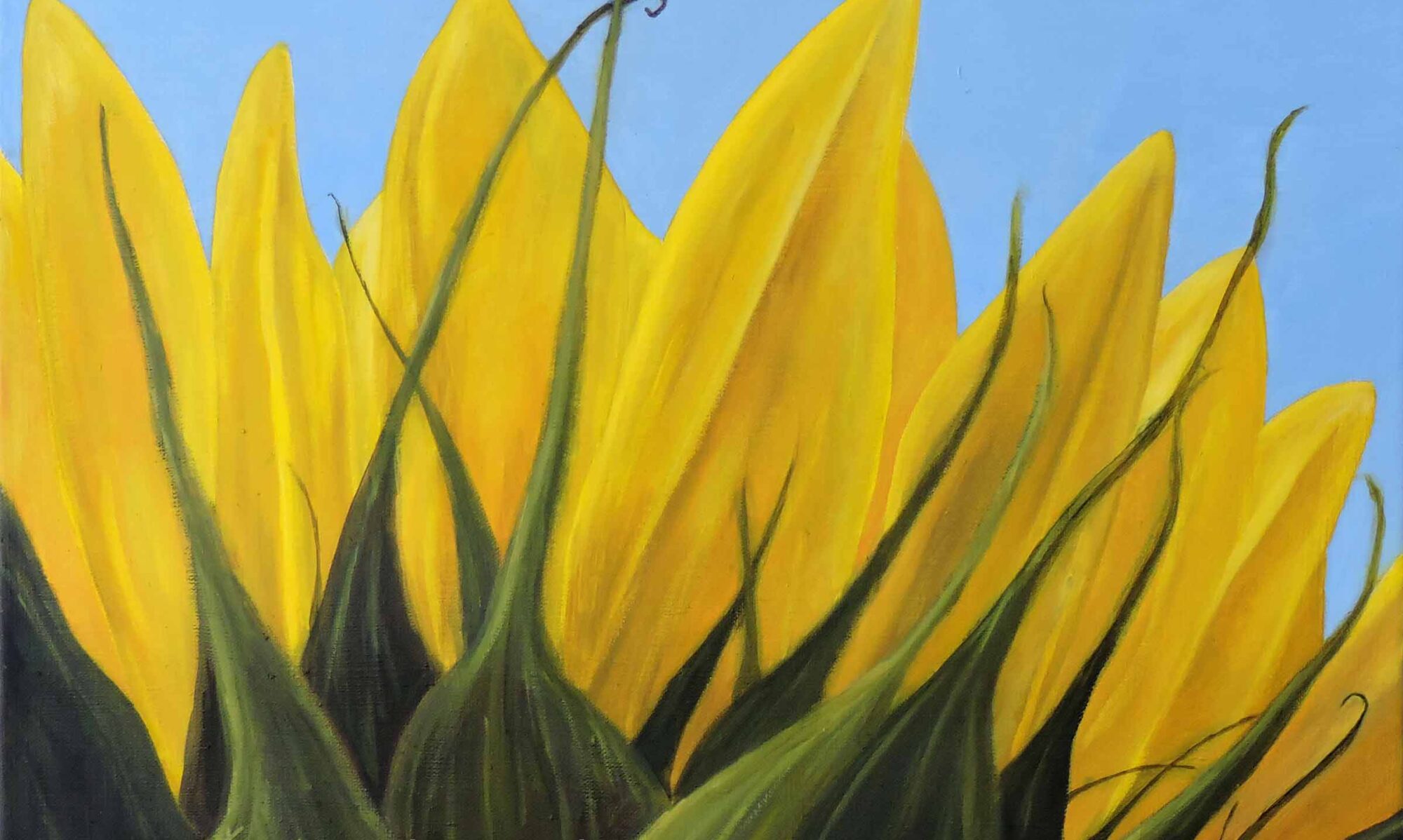I had the privilege of being interviewed by an art student attending college in California. His assignment was to pick an artist, interview that person, and write a paper about the experience. His questions were intelligent and well thought out. I thoroughly enjoyed answering Eric’s questions and was delighted to read his essay. I have it posted below, with his permission, for you to read.
—Teresa Bernard
Artist Interview: Teresa Bernard
By Eric Pott, May 8, 2007
For my artist interview project, I was fortunate in my Internet search to find the website of Teresa Bernard, a Texas painter. Teresa is an accomplished artist with a wide variety of skills and experience; she has an interesting background and has had the opportunity to express her creative abilities within her career as well as for her personal enjoyment. Teresa is primarily an oil painter; she showcases and sells her art on her web page while at the same time pursuing web design professionally. After seeing her paintings, I decided to contact Teresa and was delighted when she e-mailed me back to say that she would be honored to be the subject of my interview.
I was initially drawn to Teresa’s website, which I found while browsing the “Yahoo!” artist directory by category; I was interested in talking with a painter, and I found that she painted with a number of different types of subject matter, including religious paintings. I noticed that her website contained a great deal of information already, and I guessed that there was a great deal of interesting thought that she could elaborate on in terms of some of her early influences and her knowledge of art within the context of her career. I also wanted to learn her opinions of the art world and of its business aspects. I contacted her via e-mail in late April, and we communicated for about a week or so, during which I submitted to her my interview questions about her art, background, career, and her opinions of the art world in general.
Teresa was very fortunate to have learned many artistic elements and principles early in life. Her father was an art teacher who studied under the instruction of a successive line of artists; he taught classes in her town, as well as in some of the surrounding communities. In our interview, she placed a tremendous amount of emphasis on the artistic fundamentals and principles of design that he taught her: “….shading, lighting, composing, design, proportion, perspective, balance….all the elements that go into good composition.” Mrs. Bernard had attended college here in California, and she described in the interview that she had not originally intended to become an art student but instead initially studied Bible and communications courses. She attended Ambassador College (which she later mentioned was right across the street from the Norton Simon Museum) in Pasadena until it lost its funding; she then transferred to Pasadena Community College. There she began significant studies in the school’s substantial fine arts program, where she was required (among other things) to compose and paint artworks using styles from each major period of thought. “It was during [these] classes,” she said, “that I gained my appreciation of various art techniques and styles.”
I was interested in how she applied her artistic style in her career, and she described some of her experience as a graphic designer. She found much of her work on newspaper layouts, advertisement designs, and art design for a collector car magazine to be very rewarding. “I was doing what I love to do,” she said, especially with “complex pieces,” but she did not recommend a career in graphic design unless one was very determined. Easy access to desktop software and other tools have reduced the demand for graphic artists, she explained, and it is difficult to earn a very good salary in such a field – which was one reason why she was prompted to move into the area of web design. Designing web pages is a task that suits her personal style as a realist; she feels that often web pages are, in substance, a form of advertisement or brochure meant to advertise a product that requires a very direct approach to the viewer. “Realism in art conveys the message in a straightforward manner,” she expressed, “What better way is there than to use realism in designing a website?”

This realistic approach is evident in many of her paintings. “I paint what I see in a realistic way” is how she illustrates her personal style. Covered Bridge in Lane County, Oregon, one of her landscape paintings, is an excellent example of this. Colorful fall hues, deep shadows, and well-composed single-point perspective provide depth and space to this painting, which conveys a simple and rustic virtue that is implied in the aged white bridge and natural surroundings. Strong command of perspective is important in many of her paintings; to her, this technique is largely what gives a subject depth. “Without good perspective, the entire painting can be thrown off, and proportions are wrong,” she notes. She uses layered paint and careful application of color with a dry brush to achieve a sense of texture in her compositions as well. It is with these techniques that she often communicates a very Christian message within her paintings; her desire seems to be to represent God’s handiwork in nature, honoring the “beauty and majesty of all creation” through realism.
Mrs. Bernard has some experience within the art world in terms of shows and exhibitions, and she listed several types in which she has entered her paintings: judged art shows, gallery fundraisers, and online auctions. She seems to prefer displaying her work within these types of exhibits rather than in privately owned art galleries; oftentimes, these galleries show multiple artists’ work, and she feels that much of the time, artists do not receive as much individual promotion because of this. “I have much more interest in promoting my work than the gallery owner does,” she observes. “Their interest is making money no matter whose work they sell.” Additionally, in her experience, she has seen galleries often charge outrageous commissions, about forty to fifty percent. Teresa hopes to eventually be able to paint and show her work full-time in art shows.
I enjoyed my interview with Mrs. Bernard; it was interesting and informative. As a student of art, it was intriguing for me to be able to ask real questions and receive good practical insights into the techniques that a professional artist uses and to learn about the business end of the art world. The most important thing that I took away from the interview, however, was that to have a career in art, it is important to love what you do. “Most people work in jobs they do not like, but that has never been the case for me,” she stated. “I’ve never not loved what I do for a living.”
About The Author
At the time of the artist interview, Eric Pott was an art student attending Cerro Coso Community College in Ridgecrest, CA. Eric reported to me that he received an A on this assignment.
Art Gallery Quick Links
Flowers | Landscapes | Marine | People
Space Art | Still Life | Wildlife
Additional Reading
Artist Biography of Teresa Bernard
Artist Statement by Teresa Bernard
More information about this topic and many others can be found in My Artist Blog Index. Check it out!
Thanks for reading this!
Feel free to share this artist interview with your friends.

